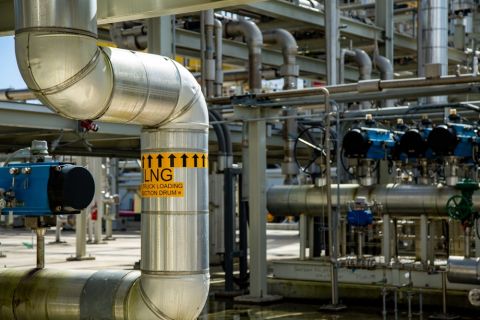One panel during the annual Cambridge Energy Research Associates conference recently was devoted entirely to risks associated with oil demand. David Zanussi, director of energy risk-management for Northwest Airlines Inc., said jet-fuel consumption is not expected to fully rebound from the post-September 11 slump until the fourth quarter of 2002. For this year's first eight months, airlines are predicting jet-fuel consumption will be down 18% from the first eight months of 2001. January bears out that outlook: jet-fuel consumption was 15% lower than in January 2001. He said that a rebound in demand may be made more difficult by airlines' use of the slowdown to retire the oldest and most fuel-inefficient aircraft. In Northwest Airlines' fleet, for example, the older planes used as much as 36% more fuel than some of the newer models. Mark Schwartz, chief economist for ExxonMobil Corp., said that even with zero oil demand growth, the industry will still have plenty of work to do supplying consumers with cleaner-burning fuels and petrochemicals. Still, the company is bullish in its outlook for oil demand: it is forecasting world energy demand will grow 2% a year between now and 2020, assuming an economic growth rate of 3%. "We don't believe fossil fuels will lose market share to non-fossil fuels," Schwartz said. "In the industrialized world, there's a chance oil will be replaced as a transportation fuel, but we don't think this will happen in the near-term. Energy technologies affect the balance post-2020." Rita Bajura, director of the U.S. Energy Department's National Energy Technology Laboratory, lists several fuels that could pose a threat one day to oil, including liquefied natural gas and methane hydrates. The latter, while currently a production hazard, could be a major source of gas worldwide. India and oil-poor Japan are researching this aggressively. Hydrates in Japan, for example, could satisfy the country's domestic energy demand for 50 years, Bajura said. But plenty of research also is being done on technologies to assure oil production remains viable for decades, said Edgar Ortiz, president and chief executive officer of Halliburton Energy Services. For several years, finding and development costs have been rising-to $4.98 a barrel in 1999-but technology can help the industry reach its goal of $4, he said. For example, monodiameter wells could revolutionize deepwater drilling. Instead of using casing that telescopes into smaller and smaller diameters down the length of the well, a monodiameter well would have the same diameter in the formation as it does at the top of the well. Such a well would be 50% cheaper to drill, use 55% less steel, and enable the use of smaller drilling rigs and platforms, Ortiz said. The first monodiameter well is expected to be drilled in two or three years. -Jodi Wetuski
Recommended Reading
CEO: Coterra ‘Deeply Curious’ on M&A Amid E&P Consolidation Wave
2024-02-26 - Coterra Energy has yet to get in on the large-scale M&A wave sweeping across the Lower 48—but CEO Tom Jorden said Coterra is keeping an eye on acquisition opportunities.
CEO: Magnolia Hunting Giddings Bolt-ons that ‘Pack a Punch’ in ‘24
2024-02-16 - Magnolia Oil & Gas plans to boost production volumes in the single digits this year, with the majority of the growth coming from the Giddings Field.
JMR Services, A-Plus P&A to Merge Companies
2024-03-05 - The combined organization will operate under JMR Services and aims to become the largest pure-play plug and abandonment company in the nation.
New Fortress Energy Sells Two Power Plants to Puerto Rico
2024-03-18 - New Fortress Energy sold two power plants to the Puerto Rico Electric Power Authority to provide cleaner and lower cost energy to the island.
SilverBow Rejects Kimmeridge’s Latest Offer, ‘Sets the Record Straight’
2024-03-28 - In a letter to SilverBow shareholders, the E&P said Kimmeridge’s offer “substantially undervalues SilverBow” and that Kimmeridge’s own South Texas gas asset values are “overstated.”





